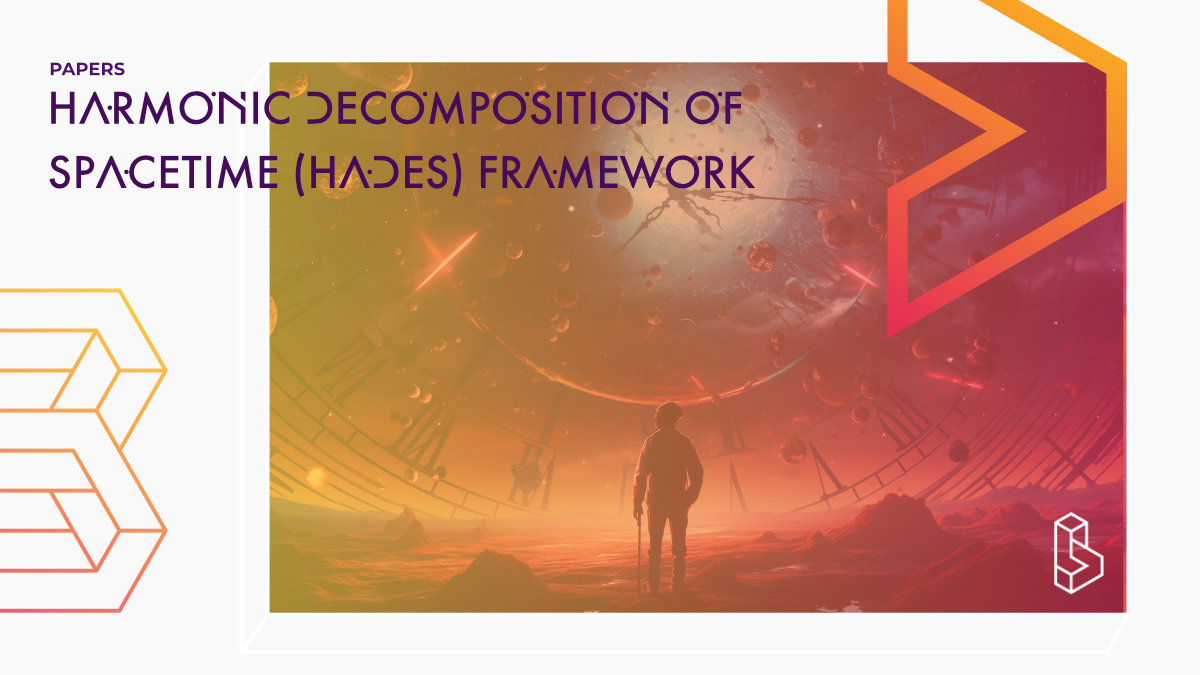This article (2024) introduces the Harmonic Decomposition of Spacetime (HADES) framework to analyse brain harmonic modes over time. Using this, the effects of DMT on these modes in healthy participants were examined. HADES showed significant changes in low-frequency modes during DMT use, indicating alterations in the brain’s functional hierarchy under psychedelics.
Abstract of The flattening of spacetime hierarchy of the N,N-dimethyltryptamine brain state is characterized by harmonic decomposition of spacetime (HADES) framework
“The human brain is a complex system, whose activity exhibits flexible and continuous reorganization across space and time. The decomposition of whole-brain recordings into harmonic modes has revealed a repertoire of gradient-like activity patterns associated with distinct brain functions. However, the way these activity patterns are expressed over time with their changes in various brain states remains unclear. Here, we investigate healthy participants taking the serotonergic psychedelic N,N-dimethyltryptamine (DMT) with the Harmonic Decomposition of Spacetime (HADES) framework that can characterize how different harmonic modes defined in space are expressed over time. HADES demonstrates significant decreases in contributions across most low-frequency harmonic modes in the DMT-induced brain state. When normalizing the contributions by condition (DMT and non-DMT), we detect a decrease specifically in the second functional harmonic, which represents the uni- to transmodal functional hierarchy of the brain, supporting the leading hypothesis that functional hierarchy is changed in psychedelics. Moreover, HADES’ dynamic spacetime measures of fractional occupancy, life time and latent space provide a precise description of the significant changes of the spacetime hierarchical organization of brain activity in the psychedelic state.”
Authors: Jakub Vohryzek, Joana Cabral, Christopher Timmermann, Selen Atasoy, Leor Roseman, David J. Nutt, Robin L. Carhart-Harris, Gustavo Deco & Morten L. Kringelbach
Summary of The flattening of spacetime hierarchy of the N,N-dimethyltryptamine brain state is characterized by harmonic decomposition of spacetime (HADES) framework
The brain is endowed with complex dynamics and can be perceived along spatial and temporal dimensions. Recent developments in neuroscience have started to indicate more spatially continuous representations of functional topography.
The gradient-like organisation of cortical topography in the human brain suggests a continuously varying boundary between and within brain regions, both in terms of function and anatomy. Studies of dynamic functional connectivity in fMRI have revealed the importance of characterising the temporal features of brain activity as opposed to the static picture described by known resting-state networks.
HADES characterizes brain’s spatio-temporal activity in terms of harmonic modes defined in space and expressed over time. HADES attempts to account for an increasing spatial scale from neuronal circuits to large-scale brain networks, and for its temporal evolution. It is often associated with alterations in visual and somatic effects, and a complete dissociation from the external environment precedes an immersion into mental worlds.
Find this paper
https://doi.org/10.1101/2023.08.20.554019
Open Access | Google Scholar | Backup | 🕊
Cite this paper (APA)
Vohryzek, J., Cabral, J., Timmermann, C., Atasoy, S., Roseman, L., Nutt, D., ... & Kringelbach, M. L. (2023). Harmonic decomposition of spacetime (HADES) framework characterises the spacetime hierarchy of the DMT brain state. bioRxiv, 2023-08.
Study details
Compounds studied
DMT
Authors
Authors associated with this publication with profiles on Blossom
Robin Carhart-HarrisDr. Robin Carhart-Harris is the Founding Director of the Neuroscape Psychedelics Division at UCSF. Previously he led the Psychedelic group at Imperial College London.

